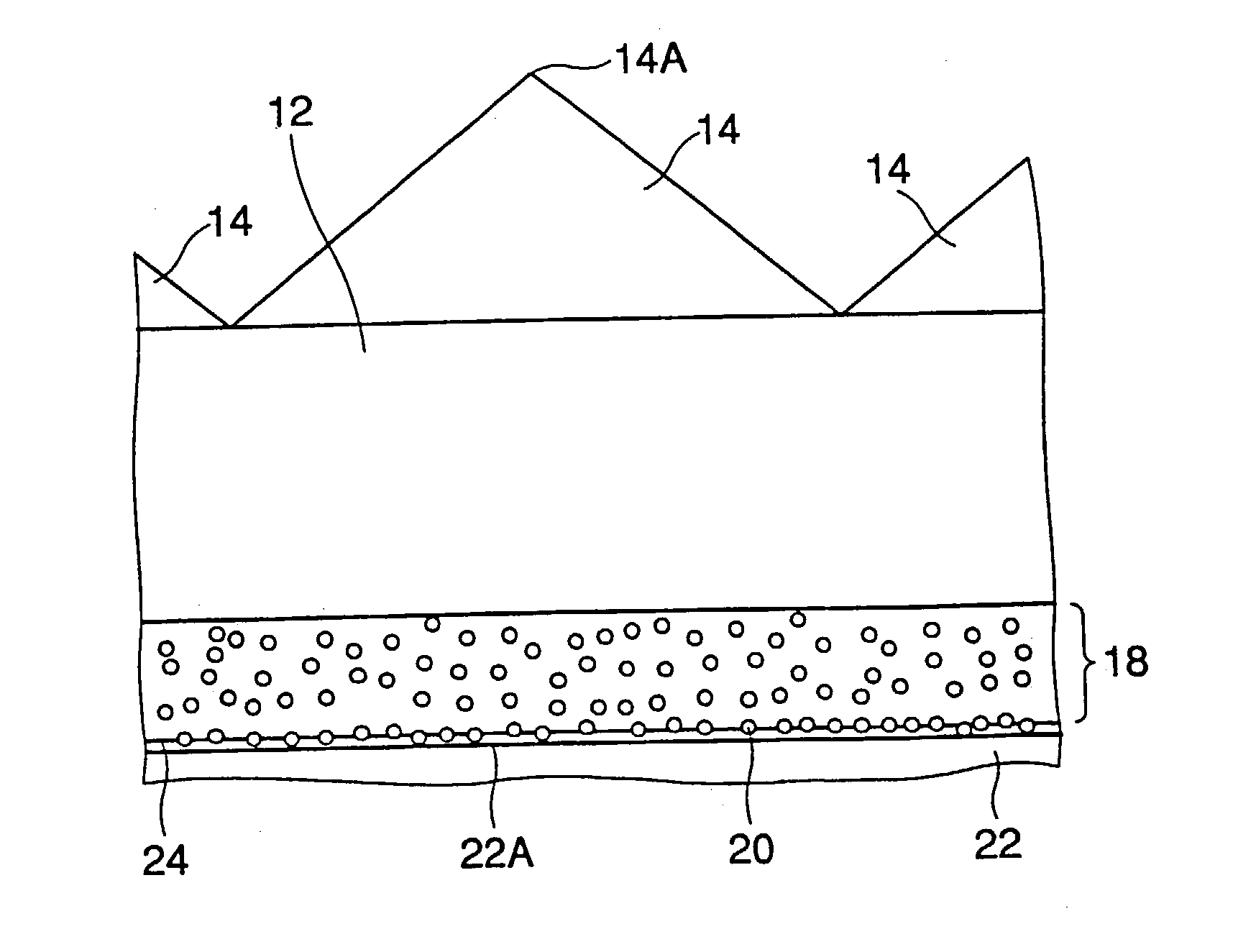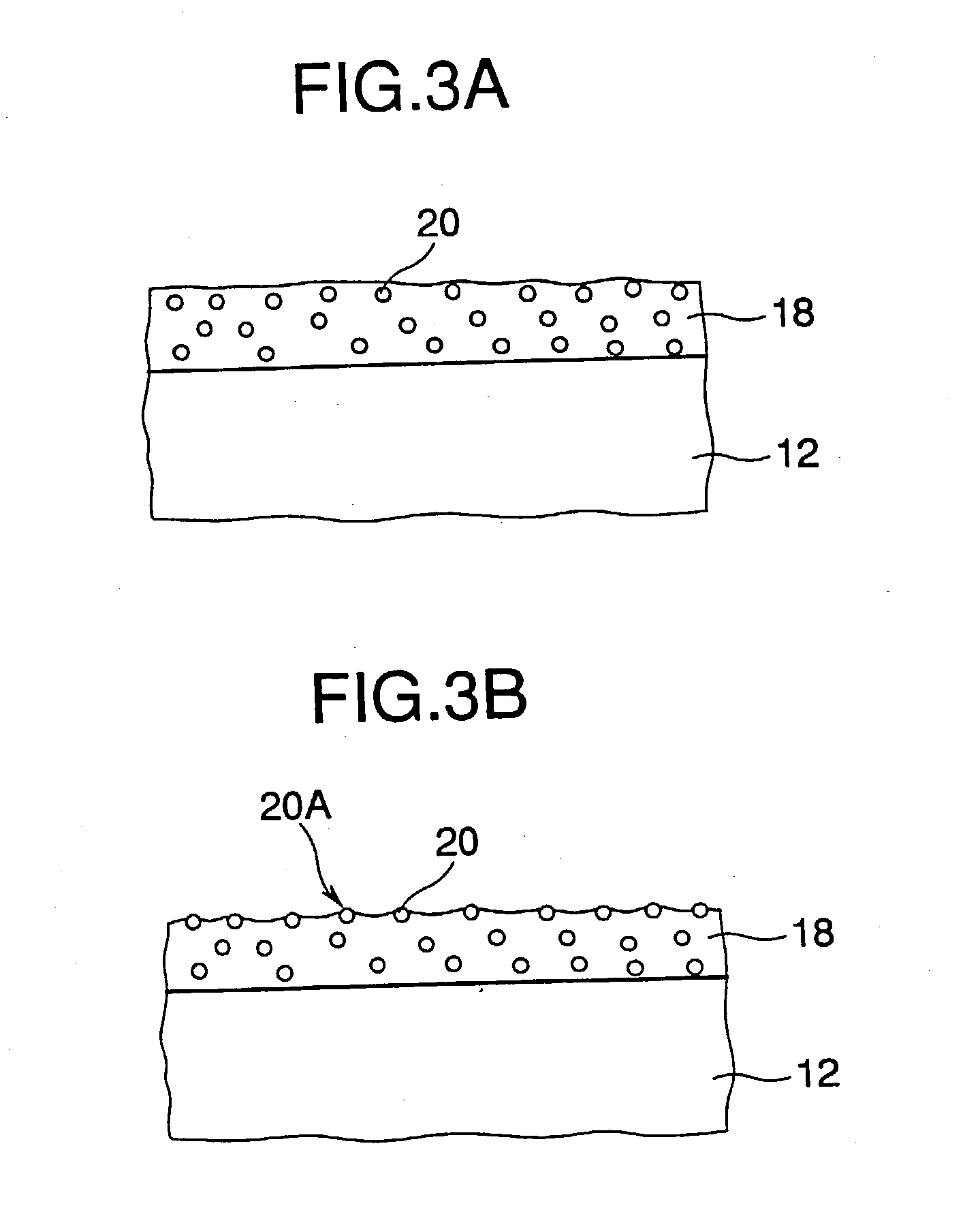Optical sheet lamination
a technology of optical sheets and lamination, applied in the direction of prisms, mountings, instruments, etc., can solve the problems of a particular surface light source, the primary function of a prism sheet for improving brightness, and the disassembly of pixels in images
- Summary
- Abstract
- Description
- Claims
- Application Information
AI Technical Summary
Benefits of technology
Problems solved by technology
Method used
Image
Examples
Embodiment Construction
[0214] As a result, interference fringes have been observed only in the comparison example 1 in Table 1.
[0215] When a single optical sheet of embodiment 1 in Table 1 and an optical sheet having the obverse surface having unit prisms each of which is an isosceles-triangular prism whose vertical angle is 90.degree. and the reverse surface which is flat and smooth are assembled, as shown in FIG. 16, in said surface light source device, an exemplary embodiment is obtained.
[0216] As a result of experiments in which an optical sheet coated with spherical beads 20 having a particle diameter distribution according to the present invention and an optical sheet coated with spherical beads 20A having another particle diameter distribution more greatly varying in particle diameter are respectively dragged, for example, in a state where the spherical beads side of each of them is in contact with a prism surface and a 10-g weight is put on it, the greater the particle diameter distribution is in ...
PUM
| Property | Measurement | Unit |
|---|---|---|
| height | aaaaa | aaaaa |
| particle diameter | aaaaa | aaaaa |
| particle diameters | aaaaa | aaaaa |
Abstract
Description
Claims
Application Information
 Login to View More
Login to View More - R&D
- Intellectual Property
- Life Sciences
- Materials
- Tech Scout
- Unparalleled Data Quality
- Higher Quality Content
- 60% Fewer Hallucinations
Browse by: Latest US Patents, China's latest patents, Technical Efficacy Thesaurus, Application Domain, Technology Topic, Popular Technical Reports.
© 2025 PatSnap. All rights reserved.Legal|Privacy policy|Modern Slavery Act Transparency Statement|Sitemap|About US| Contact US: help@patsnap.com



